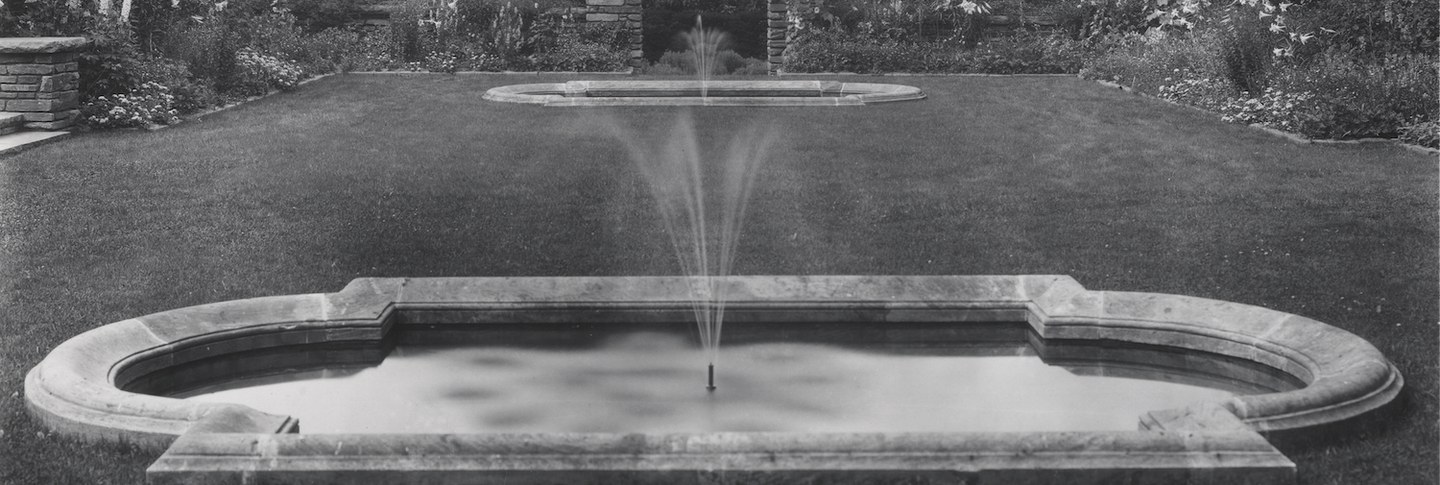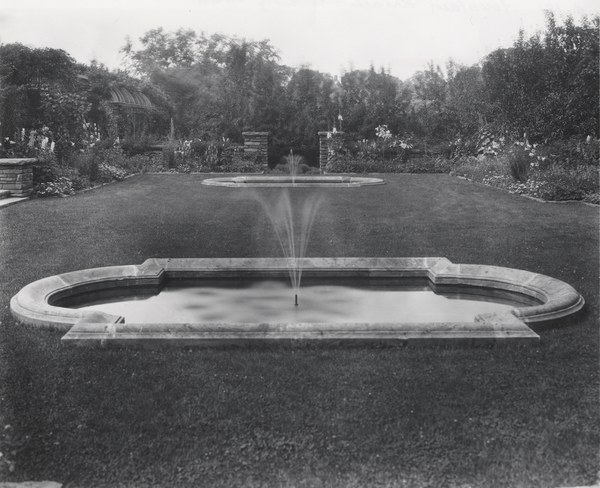Beatrix Farrand designed the Fountain Terrace as a traditional flower garden in a blend of English Cottage and Arts and Crafts style. Located on the east-facing hillside below the Rose Garden, the Fountain Terrace was approached and viewed first from above. Farrand’s plan took advantage of the Rose Garden entrance. On the staircase leading into the terrace, she planned landings that overlooked the geometric planting beds below. Later she added intricate iron balconies and a lead-canopied bench to invite visitors to pause on the steps before entering.
The earliest plans for the Fountain Terrace actually did not contain any fountains. The first design, planted in the mid-1920s, featured a central circular flowerbed anchored by boxwoods and surrounded by geometric beds outlined in flagstone. In 1927, Farrand began drawing fountain designs, and by 1930 two matching pools were in place. The following year, she added the fountains of a putto holding a fish. The addition of the pools marked a turning point in the design aesthetic of the Fountain Terrace from English Cottage to a formal Mediterranean garden style. Instead of a pattern of flowerbeds fanning out across the terrace, the majority of the rectangular expanse became unbroken lawn, and high, mounded beds were planted along the walls.
Even in such a simplified planting design, Farrand exercised her eye for detail. To add a sense of gravitas and antiquity to the garden, she specified in the Plant Book that the stone curbs surrounding the fountains must be allowed to grow mossy and aged. For the perimeter flowerbeds, she planned seasonal plantings that bloomed in yellow, bronze, maroon, and other deep, warm shades. In spring and fall, she suggested single plants like tulips and chrysanthemums be used en mass for impact.

